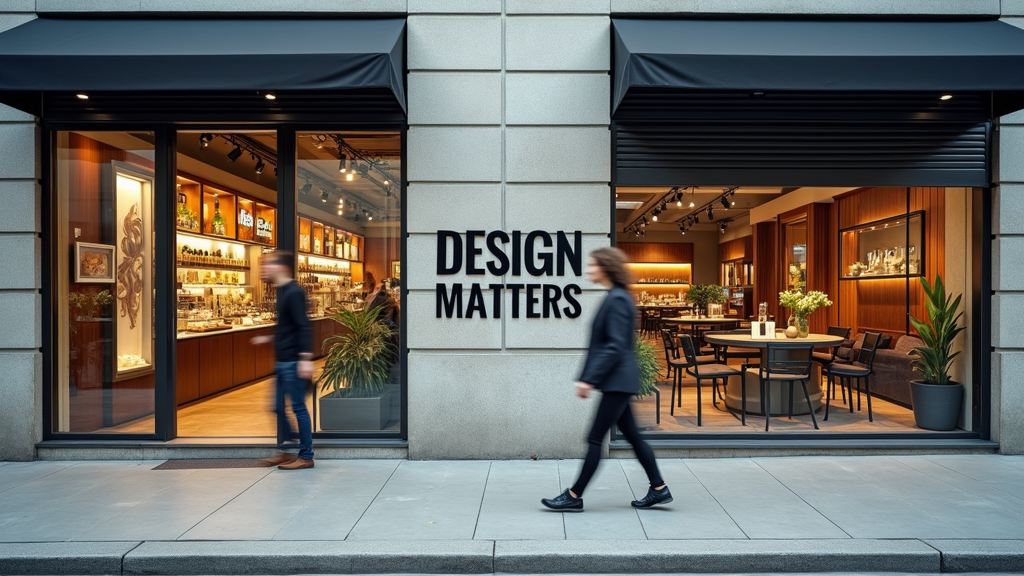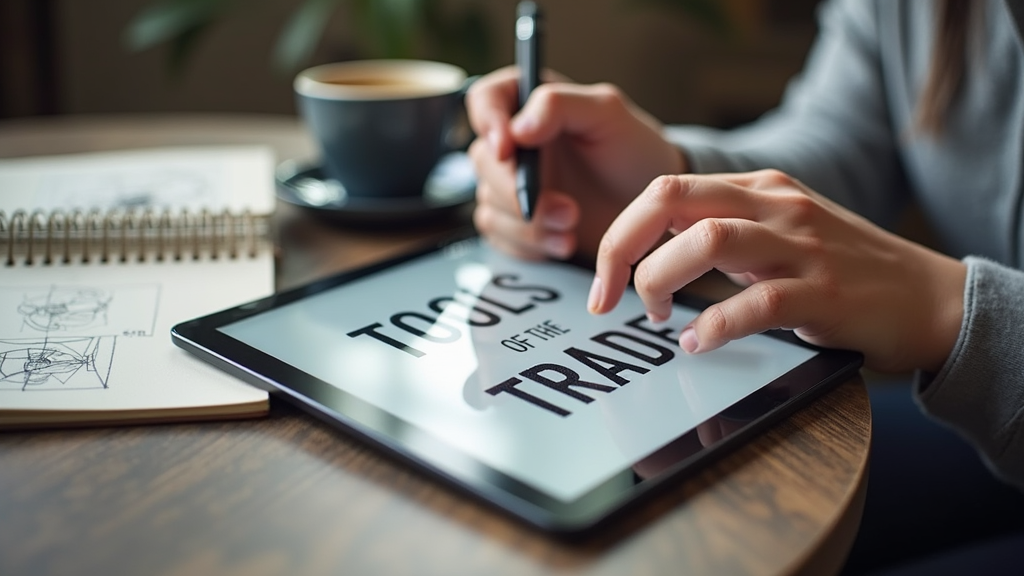
Introduction
Bad design can seriously hurt your marketing efforts. When your visuals look unprofessional, people might think twice about trusting your brand. Blurry images, mismatched colors, and hard-to-read text can push potential customers away from your content. Your social media posts might get ignored, and your website visitors could leave quickly if your design doesn't look right.
You can fix these problems with good marketing design. This visual marketing guide will show you how to create designs that grab attention and keep it. With the right design choices, your content will stand out on social media, your website will look more professional, and your brand will be easier to remember. Good design helps turn viewers into customers by making your message clear and your brand look trustworthy.
What Marketing Design Means
Marketing design combines visual elements with marketing messages to grab your audience's attention and get them interested in your product or service. Think of it as the visual voice of your marketing efforts, including everything from your social media graphics to your website design and email templates.
Your visual communication needs to work together with your marketing strategy to tell your story effectively. Good marketing design helps you share your message in a way that makes sense to your audience. For example, if you're promoting a software product, your design should make complex features look simple and user friendly through clear icons, straightforward layouts, and helpful illustrations.
Brand design basics play a big part in how people see and trust your business. The colors, fonts, and images you choose affect how your customers feel about your brand. When you use consistent, professional design across all your marketing materials, people start to recognize and trust your brand more easily. This builds a strong connection with your audience and helps them remember you when they need your products or services.
Core Design Elements
Good marketing design helps you connect with your audience and share your message clearly. Understanding basic design principles will help you create materials that look professional and get results.
-
Typography: Your font choices set the tone for your message. Use clear, readable fonts for body text and more unique fonts for headlines
-
Color Theory: Colors create feelings and help people remember your brand. Pick colors that match your message and work well together
-
Layout Hierarchy: Put important information where people will see it first. Guide readers through your content in a natural way
-
White Space: Leave empty space around your content. This makes your design look clean and helps people focus on what matters
-
Visual Harmony: Make sure all parts of your design work together. Use similar styles and keep things consistent
These design elements affect how people feel about and respond to your marketing. When you use them well, people understand your message faster and trust your brand more. Good design makes people want to click, read, and take action. It turns casual viewers into interested customers by making your marketing look professional and trustworthy.

Types of Marketing Assets
Marketing graphics help you share your message across different platforms and channels. You can create various types of visual content to reach your audience wherever they spend their time online or offline.
-
Social Media Posts: Feed images, stories, carousel posts, and cover photos for Facebook, Instagram, and LinkedIn
-
Email Graphics: Headers, promotional banners, and newsletter templates that grab attention in inboxes
-
Website Elements: Banners, product images, blog graphics, and landing page visuals
-
Print Materials: Business cards, brochures, flyers, and posters for physical marketing
-
Presentation Visuals: Slides, infographics, and charts that make data easy to understand
Each marketing channel needs specific types of graphics. Social media works best with eye catching images that stop people from scrolling. Emails need clean, simple designs that load quickly. Websites require graphics that match your brand style and work well on both computers and phones. By picking the right format for each channel, your marketing materials will look professional and get better results.
Design Impact on ROI
You can track how your design choices affect your bottom line through several key metrics. Website analytics show you important data like how long people stay on your pages and how often they click important buttons. Social media platforms give you clear numbers about shares, likes, and comments. These numbers tell you if your design helps or hurts your business goals.
Airbnb proves how good design brings real results. In 2014, they updated their brand with a new logo and visual style. Their data showed that users engaged with their content 14% more after the change. People shared Airbnb's content more often and spent more time browsing listings. The new design made their brand more memorable and trustworthy to customers.
Your design choices directly affect how many visitors become customers. Simple changes like making buttons more visible or using clearer fonts can increase sales. Colors, layouts, and image placement all play important roles in convincing visitors to take action. Testing different design options helps you find what works best for your audience. By watching your conversion rates, you can keep improving your design to boost sales.
Brand Consistency Guidelines
Your brand's visual identity needs to look the same everywhere your audience finds you. This includes your website, social media posts, email newsletters, and any other marketing materials. Think of your visual identity as your brand's personality. When you keep it consistent, your audience will recognize and trust you more easily.
A design system helps you maintain this consistency. You'll want to create clear rules about your logo usage, color choices, typography, and image styles. Store these guidelines in one place where your team can easily access them. This could be a digital document or a dedicated brand portal. Update your design system regularly as your brand grows and your needs change.
Getting your team on board with brand guidelines makes a big difference in your marketing success. Share your design system with everyone who creates content for your brand. Show them real examples of proper and improper brand usage. Regular check ins and feedback sessions will help your team feel confident about using your brand elements correctly. Your marketing materials will look more professional when everyone follows the same visual rules.
Common Design Mistakes
Your marketing design can fail if you make simple mistakes that turn away your audience. Many businesses struggle with design choices that look good at first but end up hurting their message.
-
Visual Overcrowding: Too many elements fighting for attention makes your content hard to read and understand
-
Poor Visual Hierarchy: Important information gets lost when everything looks equally important
-
Inconsistent Branding: Using different fonts, colors, or styles across your marketing materials confuses your audience
-
Missing Accessibility: Small text, low contrast, or hard-to-read fonts make your content unusable for many people
You can fix these issues by starting with a clear plan. Pick two or three main elements you want people to notice first. Use your brand guidelines as a checklist before publishing anything. Test your designs with different people, including those who might have trouble seeing small text or certain colors. Remember that simple designs often work better than complicated ones.

Tools and Resources
Your marketing design tools can make a big difference in how quickly and effectively you create visuals. Popular options include Canva for social media graphics, Adobe Creative Cloud for professional design work, and Figma for collaborative projects. Start with one tool that fits your needs and budget, then expand your toolkit as you grow.
Feature | Professional Tools | DIY Tools |
|---|---|---|
Cost | $20 to $100+ monthly | Free to $30 monthly |
Learning Curve | Several months to master | A few hours to get started |
Features | Complete design control, advanced editing, professional formats | Ready-made templates, basic editing, common formats |
Support | Community forums, official training, phone support | Basic tutorials, email support |
Sometimes you'll need to decide between doing the design work yourself or hiring a professional. Create simple designs yourself when you need quick social media posts, basic blog graphics, or simple presentation slides. Bring in a professional designer for your logo, brand guidelines, website design, or any materials that need complex editing. Your budget and time are the main factors here. If you spend more than 3 hours struggling with a design, getting help from a pro might save you money in the long run.
Design Process Steps
A good design workflow helps you create better marketing materials faster. You'll save time and avoid common mistakes by following a clear process. Your team can work together more smoothly when everyone knows what happens next.
1. Research Your Audience
Look at what your audience likes and needs. Check your analytics to see which designs they respond to best. Study your competitors' visual marketing to spot gaps you can fill.
2. Create Simple Wireframes
Start with basic sketches of your design layout. Think about where important elements like headlines and calls to action will go. Test different arrangements before moving to detailed design.
3. Design Your First Version
Build your design using your brand colors, fonts, and style guide. Keep it clean and focused on your main message. Remember to leave enough white space to make your content easy to read.
4. Get Feedback Early
Show your design to team members and if possible, some target audience members. Ask specific questions about what works and what needs improvement. Write down all feedback to review later.
5. Implement and Test
Make the suggested changes and test your design in its final format. Check how it looks on different devices and platforms. Fix any technical issues before launch.
Your marketing designs will get better with each project you complete. Try new ideas and keep track of what works best for your audience. These marketing design tips help you build a strong foundation, but the real learning comes from putting them into practice and paying attention to your results.
Future of Marketing Design
Visual content continues to grow more important in marketing. Minimalist designs with bold typography are becoming common across social media platforms. You'll notice more brands using simple layouts that work well on both mobile devices and computers. Video content and motion graphics are also gaining ground as internet speeds improve worldwide.
AI tools are changing how marketing teams create designs. Tools like Canva now include AI features that help you make graphics faster. These tools can suggest color combinations, create variations of your designs, and even generate images from text descriptions. But they won't replace human creativity. Instead, they're becoming helpful assistants that speed up your workflow.
To stay ahead of these changes, focus on building a strong foundation in design basics. Learn about color theory, typography, and layout principles. These skills will remain valuable no matter how technology changes. Keep trying new tools as they come out, but remember that good design still needs human insight and creativity. Start small by experimenting with one new design tool or technique at a time.
Conclusion
Good marketing design helps you connect with your audience and share your message clearly. By using the right colors, fonts, and layouts, you can create marketing materials that people want to look at and share. Remember that consistency in your design choices builds trust and helps people recognize your brand quickly.
You can start improving your marketing design today. Even small changes to your visuals can make a big difference in how people see your brand. Start with one element, like updating your color scheme or choosing better fonts, and build from there.
Postra can help you create beautiful marketing designs without the struggle. Our template collection includes everything you need for social media posts, blog graphics, and promotional materials. You'll find professionally designed templates that you can customize to match your brand's style.
FAQ
How much should I budget for marketing design?
Your marketing design budget will depend on your business size and goals. For small businesses, start with 10% to 15% of your marketing budget. This typically means $500 to $2,000 monthly for design work. You can begin with essential items like your logo, website graphics, and social media templates.
Can I create professional designs without a designer?
Yes, you can create good designs using modern design tools. Software like Canva and Adobe Express offer user-friendly interfaces and ready-made templates. Start with basic designs and gradually improve your skills through practice and online tutorials.
How often should I update my marketing designs?
Update your marketing designs whenever your message changes or your current designs stop performing well. Most businesses refresh their social media templates every 3 to 4 months and their website graphics twice a year. Keep your brand colors and logo consistent while updating layouts and imagery.
What's the most important design element for conversion?
Clear call-to-action (CTA) buttons are crucial for conversion. Make your CTAs stand out with contrasting colors and plenty of white space around them. Keep the message simple and action-oriented, like "Start Free Trial" or "Get Started Now."
Should I follow design trends or stick to classics?
Mix both approaches. Use classic design principles for your core branding elements like logos and color schemes. Add current trends to temporary content like social media posts and seasonal campaigns. This balance keeps your brand recognizable while staying fresh and relevant.
Want to save time on social media design? Postra offers customizable templates and OpenGraph images that help you create eye-catching social media content quickly. Our templates work for all major platforms and automatically adjust to the right sizes.
